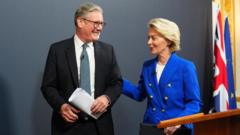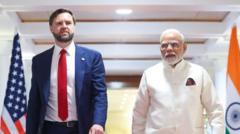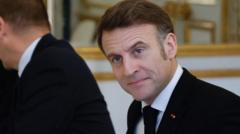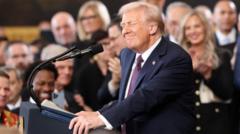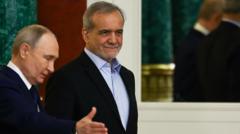Physicists have unveiled their most precise measurement of the muon's wobble, bringing them closer to understanding the universe's fundamental structure.
Unraveling the Mystery of the Muon's Wobble: A Step Toward New Physics

Unraveling the Mystery of the Muon's Wobble: A Step Toward New Physics
Recent findings on the muon's wobble could reveal new forms of matter and energy, but uncertainty remains regarding the interpretation.
The Muon g-2 Collaboration has made significant strides in the quest for knowledge about the cosmos, presenting a fresh insight into the behavior of muons—a heavier, unstable cousin of electrons. This key discovery, which was reported in Physical Review Letters, may reveal previously unknown forms of matter and energy, suggesting the potential for groundbreaking advancements in theoretical physics.
Twelve years in the making, the journey of this research involved transporting a large magnetic ring from across the United States to Fermilab in Batavia, Illinois. The new findings offer a benchmark in these explorations, according to Peter Winter, a physicist from Argonne National Laboratory and spokesperson for the collaboration. "We seek to understand how the universe was formed, what it's composed of, and how its components interact," he explained.
However, the results raise more questions than answers. Physicists have predicted two competing values for the muon's wobble, and the latest result endorses one of these predictions. Yet, until the second rival prediction is resolved, scientists remain uncertain whether this brings them closer to unveiling new physics concepts or if it merely reaffirms existing theories.
Aida El-Khadra, a physicist at the University of Illinois Urbana-Champaign and leader of the Muon g-2 Theory Initiative, commented on the findings: “This is a remarkable success for the Fermilab experiment. Nevertheless, theorists still have much work to do, and until we clarify these discrepancies, the final judgment remains pending.”
As researchers continue to analyze these measurements, the implications could reshape fundamental understandings of particle physics, potentially leading us to new energies and forms of matter that have eluded detection until now.
Twelve years in the making, the journey of this research involved transporting a large magnetic ring from across the United States to Fermilab in Batavia, Illinois. The new findings offer a benchmark in these explorations, according to Peter Winter, a physicist from Argonne National Laboratory and spokesperson for the collaboration. "We seek to understand how the universe was formed, what it's composed of, and how its components interact," he explained.
However, the results raise more questions than answers. Physicists have predicted two competing values for the muon's wobble, and the latest result endorses one of these predictions. Yet, until the second rival prediction is resolved, scientists remain uncertain whether this brings them closer to unveiling new physics concepts or if it merely reaffirms existing theories.
Aida El-Khadra, a physicist at the University of Illinois Urbana-Champaign and leader of the Muon g-2 Theory Initiative, commented on the findings: “This is a remarkable success for the Fermilab experiment. Nevertheless, theorists still have much work to do, and until we clarify these discrepancies, the final judgment remains pending.”
As researchers continue to analyze these measurements, the implications could reshape fundamental understandings of particle physics, potentially leading us to new energies and forms of matter that have eluded detection until now.




